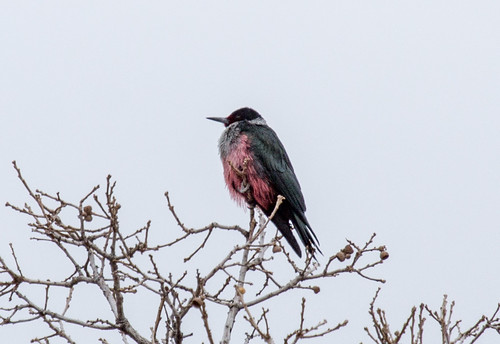I spent April 30, 2013, at one of my favorite places on the planet, the Wichita Mountains of Oklahoma, doing my favorite kind of birding—parking myself in one spot to take in the sights and sounds of one particular place and its creatures going about their daily lives.
The morning started out clear and a gorgeous 63 degrees. As I reached the area where I’d heard a male Black-capped Vireo the day before, he was in the middle of a bout of singing. I had to approach slowly, not only to avoid disturbing him but also to pay close attention to where I was walking. Sure enough, a small diamondback rattlesnake, maybe 18 or 24 inches long, was curled in a patch of sunlight—stepping on it would have been most unpleasant for both snake and me. And I didn’t want to crush any of the gorgeous collared lizards abundant in the area.
The vireo stopped singing by the time I reached the spot where he’d been vocalizing, so I parked myself by the snake. Sunning rattlesnakes hide themselves in plain sight by not moving, but suddenly a stunning, iridescent beetle larger than a June bug wandered by.
I was hoping he’d veer to the right or left as he approached the snake, but no—he climbed right over the snake’s rattle.
The snake lifted its head slowly and smoothly as the beetle walked along its coiled body. Once it even tried to climb over the snake, whose body was too smooth and steep to allow that. Watching the plucky insect moseying along, I found myself holding my breath.
Every fiber of my being hoped that it would clear the snake safely even as part of my brain was taking in the little drama with scientific objectivity and part was dutifully reminding me that there was no safe way for me to intervene no matter what happened. But either the snake wasn’t hungry or it wanted a hot breakfast, or at least warm-blooded fare, so the beetle went on its way.
Right as that story played itself out, the vireo started singing again, so I moved closer to the tree where he was. He sang from various perches, picking up food as he moseyed from branch to branch, slowly making his way in a clockwork fashion around a portion of his territory, every now and then flitting to an exposed perch for a minute or two of uninterrupted singing. After about ten minutes, he stopped singing, and I quickly lost track of him.
During the next 15 minutes or so, a Painted Bunting started singing on a bare branch in full sunlight—a stunning sight even the most avowed non-birder would enjoy. He was still singing when the vireo started a new singing bout, again working his way through various shrubs, making me aware that the boundaries of his territory were wider than I’d guessed. At one point, I thought he was making some cool mating vocalizations with a female, but that turned out to be an altercation with the resident Blue-gray Gnatcatchers.
For 5 ½ hours that morning, and another 3 at mid-afternoon, I stayed in the vireo’s territory, watching him during singing bouts, as he surveyed the stunted oaks and other vegetation in his rocky home.
Between singing bouts I watched Black-chinned Hummingbirds display and chase each other, picked out a couple of migrants passing through, followed a skulking Rufous-crowned Sparrow for a few moments, and gazed at leisure at Mississippi Kites winging overhead.
As the sun climbed in the sky, the temperature rose to 89 degrees, and lizards started scooting over the rocks and basking in the sun.
Black-capped Vireos thrive in the Oklahoma heat, and throughout the afternoon, every 10 to 20 minutes, my little guy started up singing anew, inspecting his territory and doing what he needed to do to attract a mate. I was as hopeful as he that in the days to come, a female would arrive on the scene, and the pair would raise new little Black-capped Vireo chicks in this tiny heaven on earth.














